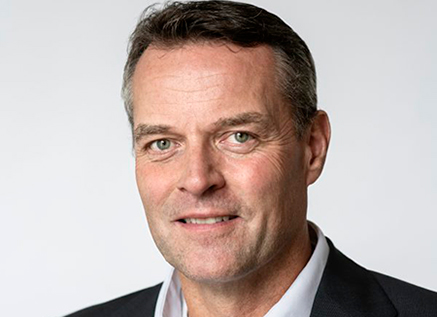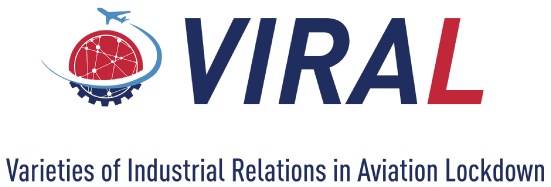
Interview with Prof. Steen Navrbjerg, Associate Professor, Employment Relations Research Centre (FAOS), Department of Sociology, University of Copenhagen
We’re speaking today with Steen Navrbjerg, Associate Professor at FAOS, the Employment Relations Research Center, at the University of Copenhagen, and one of the inspirations for the VIRAL project.
To get started, what’s your current role, how did you get there and what kinds of research questions drive you?
I’m a cultural sociologist by education, which also means you have to deal a little bit with sociology, as well as anthropology and part of my research was actually to look into the Japanese society in the period from 1600 to 1868. And somehow I got into thinking a little bit about what society was like in Japan. Why did people have this very group oriented way of thinking and that led me to look into total quality management (TQM), which was adopted at the company level in many firms. I was basically looking into what was happening with worker solidarity, when you have total quality management and Japanese production principles, working on the company level. I’m very much into micro-sociology at the company level. I’ve done more than 500 interviews with shop stewards and managers. So, that’s what started the whole thing. And then I got into FAOS, which is working very much with industrial relations, and basically the regulation of the labour market. And so, industrial relations, collective bargaining, but also very much about EU directives and how they affect the national labour market systems as well.
Can you explain more about FAOS, the Employment Relations Research, where you are Associate Professor?
It’s a very special group because we have existed now for 32 years. I’ve been there for almost 30 years now and the whole group has about 10 full-time employees. Most of us are associate professors and we are basically sponsored by the labour market partners, which means the employers’ organisations and the unions as well as the Ministry of Labor. So it’s a very special situation that we actually have been able to feed ourselves for 32 years.
We create a five year research program, in cooperation with the social partners. Some people ask us sometimes if we are “in the pocket” of the social partners, but we’re very lucky that we have both sides. Here, we have employers as well as unions and what they are interested in is what we are interested in. So, when you have a financial crisis, you’re interested in labour shortage. When you have a situation right now, where you have a lack of labour, in many areas, that’s what you’re interested in. So it’s quite a special group, founded by two professors, who are now emeritus.
Shifting to VIRAL, can you share a little bit about where the idea for VIRAL comes from?
We were a group of five countries working on the value chain within the meat sector, back in 2017, 2018, 2019. And it was really interesting to see what one little change in one link in the value chain actually changed industrial relations in other countries very easily. When the wage went down in Germany, suddenly you have to move the slaughterhouses from Copenhagen to Germany and so forth. But I had also been working a little bit with the Ryanair, because we had a conflict in 2015 with Ryanair in Denmark. They didn’t want to do a collective agreement and then I thought: “Okay, the ultimate multinational company, that can move both labour and the means of production, is an airline company so why don’t we look into the value chain of this?”
So I presented this idea to my friends in the other countries in 2019, we started actually working a little bit on the application in February 2020. Fast forward to the 13th of March 2020, we had covid-19 and suddenly the whole area within aviation changed radically. It changed all over the world, but everybody knows that aviation was hit harder than practically any other branch. So we basically still had the idea to look into working conditions in aviation, but now in light of COVID-19. So that’s how the whole thing started and we were a pretty strong group in the meat project, so to speak. So we also really wanted to work together again.
That’s great, to be able to bring not just your expertise but also the cohesiveness of the group to analyse a new problem. And as you put it to “the ultimate multinational” that can move both labour and capital. So what’s your role within the project?
I’m one of the country correspondents, so to speak, and doing my country reports. But together with Michael [Whittal], we did Work Package 3, which is looking into how aviation was before covid-19, what was the industrial relations system, how was it affected by legislation and EU directives and so forth? So our job, in particular, regarding this was to write together the seven reports from the seven countries involved into one report that had a look at how aviation was developing, looking into the similarities and differences between the countries as well.
I’m curious, from a comparative perspective, what are some things that stand out for you? Was there something that confirmed what you thought going into it, and what are some things that surprised you?
Well, “convergence” was most prevalent when you work with international companies, and they work across borders, they basically adopt each other’s business models. But with aviation this possibility is emphasised by the fact that you really don’t belong to any country. You don’t have to live up to any specific, industrial relations system, because if you don’t like it in one country, you just move to another country.
So it’s actually the dream of any multinational company. Here you actually are independent of the national structure. Even when it comes to infrastructure, you can actually choose between different airports. You can take the cheapest airport, and that’s actually what the low cost carriers use to get prices down. They say: “we’re not gonna take this airport, we’re going to take another airport, unless you get your prices down.”
When it comes to labour, you can just take the case of Ryanair: Ryanair doesn’t have a collective agreement in Denmark. They just made one recently, through Malta Air, in one of the airports. But for many years they hadn’t had a collective agreement in Denmark. But nevertheless, they are the third biggest company operating from Copenhagen. How come? Well they move in the labour from Lithuania and from Poland at 5:30 in the morning and at 7:30 you and I, and other people, are taking a plane from Copenhagen to all other destinations in Europe. And by doing that Ryanair has 38 takeoffs and landings in Copenhagen every day, without having a collective agreement in Denmark, without having any labour positioned in Denmark, actually. So they basically move in the labour and the means of production, within one-and-a-half hours, and then operate from that country.
While these companies, as you put it, are independent of any one nation-state, there is still a degree to which the regulatory, legislative and maybe IR frameworks in individual countries represent constraints under which these airlines are operating. It’s not that the rules don’t matter, right?
They do matter, but you can choose, when it comes to to wages or working conditions, you can just say: I’m gooing to adhere to that system, in Ireland or other places, and you can even see the legacy airlines, like SAS, which is normally based in Scandinavia, now have companies positioned in Ireland because they have to compete with the low cost carriers, right? So we have a situation that, of course, puts pressure on the Danish workers, the Danish cabin crew and the Danish pilots, because how are they going to compete with the wages they get in Ireland, because we have different living conditions as well.
So that’s what I mean about convergence, you have a business model that seems to work well and then even though the legacy airlines don’t want to live up to this business model, they don’t want to have this business model, they simply have to find ways to to save money, and legacy airlines, like SAS in Scandinavia, they are losing big money, every quarter now, they have 13 quarters in a row where they have lost money. So this is big money, we’re talking about 160 million euros every three months, they lose. So it’s really big money and it’s very difficult to see how they can survive in the long run. But they try by adopting the business model of low cost carriers. But what do we do, when the personnel are living in Denmark, and we have the living conditions we have in Denmark, it’s not cheap to live in Denmark, especially around the cities.
Can we talk a little bit about Denmark, specifically? In order to understand air transport in Denmark, what are some of the things that are really important for someone to know?
Well, I think the most important thing, if you look at the industrial relations system as a whole, it’s very important that sector agreements are prevalent in the Danish system. We have a system where you have a peace obligation as long as the collection agreement is running. Agreements are normally two to three years. When it’s actually running, you have no right to strike. You have no right to lock out your employees. Which means you have maybe a window of one to two months, every three years, where you can actually employ a strike. So that’s one of the things that sometimes, when people are doing due diligence as well, as you invest in a country like Denmark, that’s quite important compared to other countries like France and Italy at the moment, or Greece for that sake, where people go on the streets immediately. So I think that’s very important.
It’s a highly institutionalised system. It’s respected by both parties. We have a union density of about 65%, which is quite high. And collective bargaining coverage is quite high as well. Now the interesting thing is, when we look at the aviation sector, one of the things that actually surprised me a little bit, was that it’s very much company agreements, it’s not sector agreements. So the prevalent model, around the Danish system in general, is sector agreements. And then you fill out the sector agreement locally by having local negotiations, where you can pull up the rate of half a euro or a quarter of a euro or something like that. But you basically have a level that accounts for the whole sector. In aviation it’s very much sector agreements, and even when we ask the unions, if they would like sector agreements, they say “you know it doesn’t work, because every company is so special and so forth.”
But what I’m thinking now, and it’s something I haven’t thought through yet, but you’re allowed sometimes as a researcher to think ahead, I can’t help thinking if there were sector agreements, wouldn’t it be easier to compete with the low cost carriers? But you have this situation again that sectoral agreements are national, and the whole business model of aviation is international. You can choose to make them international, but the fact that you jump from stone to stone and make a new agreement with one company, another company, another company, could mean that you actually are going to water down wages and working conditions as well.
Can you talk a little bit about the new CBA signed by Ryanair in Denmark?
They did it through the subsidiary, Malta Air, in Billund airport, the second biggest airport. They [Ryanair] keep it [the CBA] quite close, but the idea, of course, is that Ryanair has one major interest in doing collective agreements, and that’s probably the only interest they have, and that is so they can have a base in the country where they operate from, they don’t have to fly in the planes from other countries. So that’s the main interest. That means that the employees can actually sleep in the airport or near the airport. They can live in the country and also the planes could also stay in the airport, because they actually are not allowed to stay in the airport unless they have a base there. That’s the main interest.
The interesting thing here is that this collective agreement is made by the metal union. The pilots and cabin crews are now members of the metal union, and they made this agreement as well as they made the agreement, this summer, between the pilots and SAS after two weeks of conflict.
If you had a magic wand, and you could make policymakers and social partners implement one change, what would that be?
That’s the worst part of our job, when we engage in such a project, we’d be very good at finding the problems. We’re not very good at finding the solutions. But as I said, I think the sector agreement could be one step, but we just have to be aware that sector agreements are still nationally bound. So, we have a situation which is very clear, when you look into this business, that you have national industrial relations systems, and you have a very international business here, working across borders. And as we have said, they can move labour, capital, and the means of production around very easily. So I basically don’t see any way out of this other than you have to find common ground in European aviation.
And, of course, we have to be aware that when it comes to the ground personnel they could still be within national systems to a very high degree at least, right? So with this value chain, the chain is maybe a little weak, when you see the difference between ground personnel, because you can’t move them as easily as you can. I think it’s very difficult to find a real solution to this unless you find common ground across Europe. And we all know what kinds of problems there are here, because some countries could be interested in different wages and working conditions than other countries. You can just see the minimum wage directive in the EU, which even Denmark is against. So we have some challenges here. But we have to find some kind of common ground.


